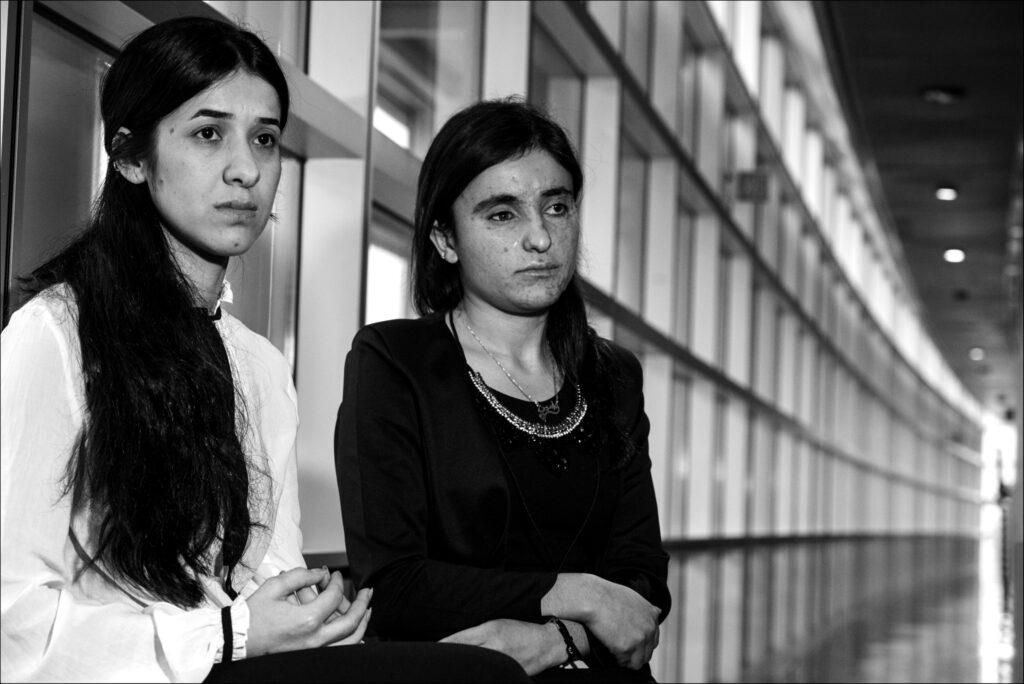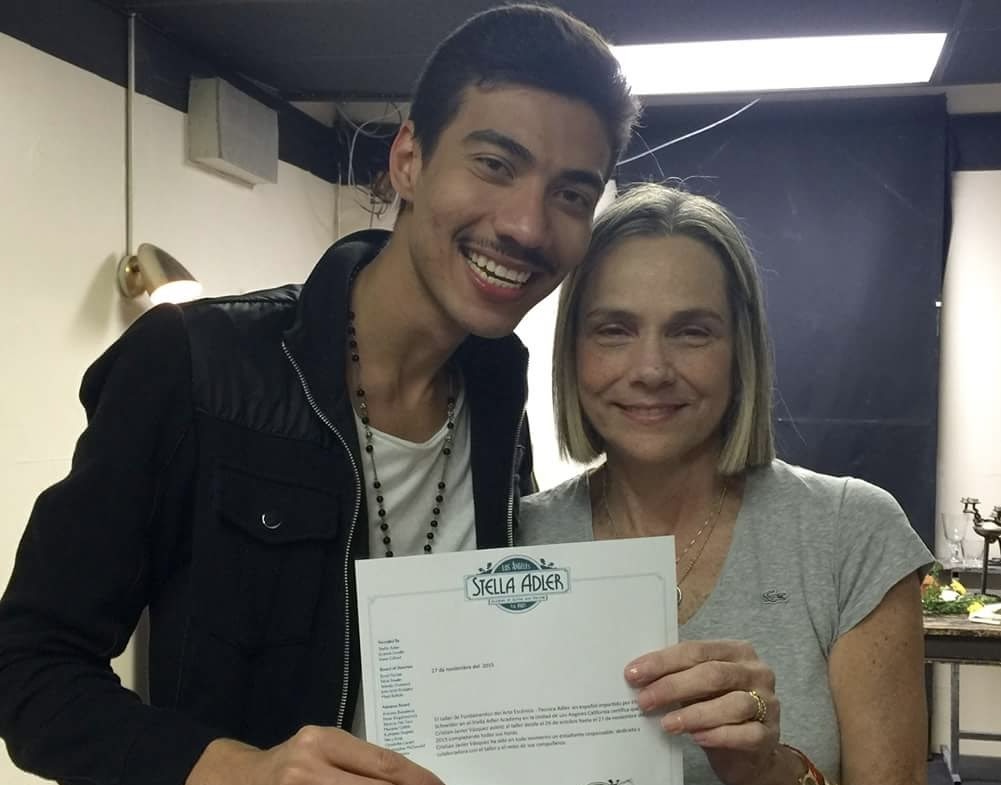(ORANGE, Calif.) — In 2014, the Islamic State of Iraq and Syria (ISIS) attacked minority groups in the northwestern part of the country, including the roughly 500,000 members of the Yazidi people living near the Sinjar mountains. In actions now recognized as genocide, ISIS forced the Yazidi people from their ancestral lands, killing thousands, and took many of the women and children captive. Of those taken, 5,200 were sold into sexual slavery. As of March 2021, it’s estimated more than 3,000 women and children are still missing.
Nadia Murad, who later won a Nobel Peace Prize for her advocacy work, was among those captured. For three months, she was repeatedly and violently raped before managing to escape.
She told UN ambassadors.
“I can still feel my niece’s hands being ripped out of mine as we were separated and loaded onto buses like cattle,” Murad said. “And I can still calculate what my body was worth to those who bought and sold it.”
The Yazidi genocide was undeniably newsworthy, and it is no surprise that journalists sought interviews with survivors. Unfortunately, some journalists, usually male and foreign correspondents, inflicted additional pain and hardship on the women they interviewed, according to a study by Johanna E. Foster and Sherizaan Minwalla. Though there are guidelines that help journalists navigate trauma reporting with sensitivity, these journalists did not adequately meet their profession’s ethical standard to “minimize harm.”
One reason for this failure is that the overriding rules that govern journalism seem to favor ethics of justice over ethics of care, thus offering an inadequate framework for dealing with victims of trauma, particularly when weighing the needs of an individual against the public’s right to know.
Under its tenet to minimize harm, the Society of Professional Journalists encourages journalists to be mindful of cultural differences and to consider a person’s ability to give informed consent to being interviewed. Additionally, journalists are to use heightened sensitivity when dealing with victims of sexual violence. According to the Yazidi women interviewed, many journalists did not heed this council.
Minwalla witnessed the ways journalists failed Yazidi women while working as a human rights lawyer in Kurdistan. In an article for The Daily Beast, she likened the journalists’ behavior to another moral low-point in journalism’s history when, in the 1960s, Newsweek journalist Edward Behr overheard a reporter shouting to a group of rescued Belgian nuns in the Democratic Republic of Congo, “Anyone here been raped and speaks English?”
Some of the Yazidi women interviewed reported feeling pressured to give interviews and were uncomfortable with the line of questioning. According to a 2018 study for BMC Medicine, almost all the Yazidi women experienced tremendous emotional distress in the repeated retelling of their horrific experiences.
Journalists also failed to consider the long-term ramifications of publishing these women’s names and sharing their pictures.
Elizabeth Smart, also a victim of kidnapping and sexual assault, explained that just encountering her story in the media made recovery more difficult and wishes media professionals were more “trauma-informed.”
“The media talking about it can cause so much damage to an individual’s journey forward toward being healthy and healing,” Smart said.
Losing their anonymity put these Yazidi women, their families, and those still in captivity at risk for further violence and retaliation. Additionally, the Yazidi women faced stigmatization within or rejection from their conservative communities, which only exacerbated their already poor mental health.
Many of the Yazidi women interviewed by Minwalla and Foster felt that it was important for the world to know what happened to them, but often felt betrayed by journalists.
Minwalla quoted a Yazidi survivor called Alifa (a pseudonym for safety reasons) who said, “[Journalists came] from Europe and from the United States, and from Iraq. [One] interviewed us and we told him, ‘Please don’t put it on TV,’ and he said ‘Ok, I swear, I will not put you on TV.’ But in the night we opened the TV and we saw ourselves. We called him but he didn’t answer. We were so sad, and I was so sad.”
Kelly McBride, a Poynter Ethics Fellow, pointed out that journalism is under fire because it is perceived that journalists have no ethics. Because journalism was dominated for so long by white men, the framework for ethical decision-making caters to a traditionally male, western European school of thought.
Dubbed “ethics of justice” by Harvard psychologist Carol Gilligan, the approach depends on an abstract set of values to which weight is assigned during specific cases of ethical reasoning. She was not suggesting that this approach was bad, but that it was just one of several approaches people might take. Gilligan argued that there were widely practiced, but usually unrecognized alternatives to ethical decision-making that varied by class, race, and gender. One alternative, dubbed “the ethics of care,” was rooted in preserving relationships and connection.
“The ethics of justice treats people with impartiality, according to some universal standard. However, with ethics of care, you have an obligation to care for the particular person in front of you… In care ethics there is a sense of partiality and proximity,” explained Jeff Nielsen, professor of philosophy and ethics at Utah Valley University.
McBride points out that in traditional journalism, care ethics get overlooked and are considered inferior when they collide with other long-held journalistic values like remaining independent or telling the truth — especially against the “democratic value of a public’s right to know.” Those values certainly have merit; however, when covering sensitive stories and interacting with people in pain and distress, it may not be the best approach, at least not initially.
William F. Woo, a professor of journalism at both Stanford and UC Berkeley, advocates for an approach that gives more weight to care ethics. He asked McBride whether it really challenges a journalist’s truth-telling if he or she also provides a meal to one starving. Woo doesn’t think so.
“I don’t see anything wrong with acknowledging in an editor’s note, ‘We fed this family.’” he said.
Returning to the Yazidi women, it was not the journalists’ responsibility to fix all their problems, but the journalists should have acted with more care and compassion than they did.
Under the ethics of justice, these journalists might have defended their behavior and argued that the nature of breaking news and the public’s need to know overshadowed anything else. Others may have suggested that retelling the women’s horrors in explicit detail was the only way to elicit a social response. Others might have felt that reporting on the crimes gave a voice to these otherwise voiceless women, and that was service enough. But in the eyes of the Yazidi women they interviewed, it wasn’t enough. The journalists could have avoided inflicting additional hardship had they looked beyond the ethical biases that govern their profession and incorporated ethics of care.
Contrast their behavior with the approach taken by Raber Y. Azis, a journalist at IOM Iraq who recently interviewed the Yazidi women for a piece in Al Jazeera.
Though he emphatically insists that he is not a trauma expert, Azis did attend workshops his organization offered that provided training for journalists reporting on sensitive issues where mental health and suicide are a concern. Rather than contact the women directly, Azis arranged interviews through Yazda, a trusted local organization that manages the Yazidi Survivors Network, that was able to get informed consent for the interviews.
Mindful of the fact that these women might be wary of strange men, Azis provided his questions, in writing, to the (female) social worker who would be present during the interviews and who served as a translator. He focused his questions on the women’s current state and needs.
“I avoided asking questions about their personal stories of losing family members, or the experiences they went through in ISIS captivity,” Azis said. “I got these details from the social worker instead of asking them the questions that forces them to remember the atrocities in detail.”
After their interviews, Azis followed up via the social worker to be sure the women were doing okay.
How different these two approaches were.
Admittedly, Azis was not covering breaking news as the earlier reporters were. He had the benefit of hindsight as well as the time and resources to provide several layers of care for the vulnerable women he interviewed. Additionally, the nature of his piece was advocacy journalism, which allows for a journalist to have a position in the story. However, none of this excuses those early reporters who retraumatized Yazidi women.
There are guidelines for journalists that hint at the ethics of care, such as those offered by the Dart Center for Journalism and the UN High Commissioner for Refugees. Ignoring those guidelines to serve the greater good is a choice rooted in the ethics of justice. But in sensitive matters and when dealing with already vulnerable people, the ethics of care must have a stronger voice in journalistic decision making.
McBride suggests there will be “payoffs” for choosing ethics of care.
“We [journalists] will make better decisions,” McBride said. “We will be better able to explain ourselves to the public… We will be better journalists. And we will tell better stories.”
And perhaps most importantly, journalists will truly minimize harm.
Disclaimer: Jeff Nielsen, the professor of ethics who provided academic insight about ethics of justice and of care, is the reporter’s father.


